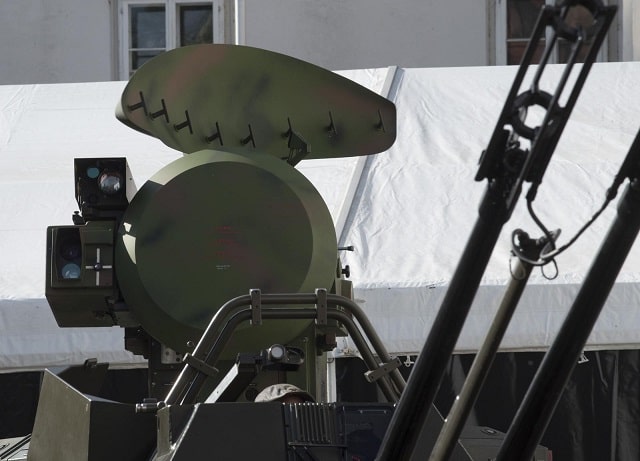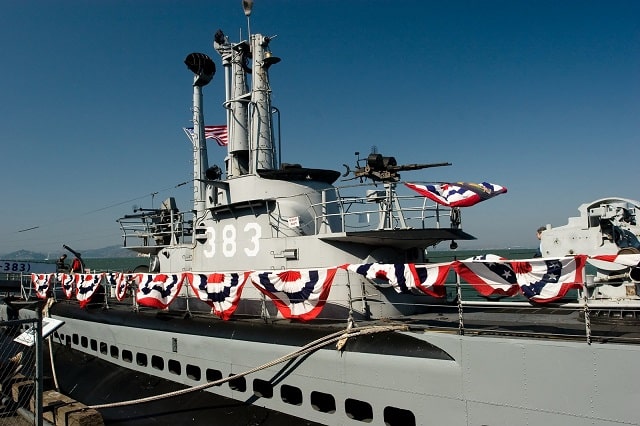Guide to Inventory Management for Defense Product Manufacturers


The defense industry in the United States reached $778 billion in 2020, providing significant opportunities and a steady source of growth for suppliers. Defense spending by the U.S. government is significantly higher than all other developed nations and makes up nearly 40% of all government military budgets worldwide. As suppliers and contractors continue to develop and position their products within this industry, modern inventory management control systems have become a critical need.
Products fabricated for use in defense applications must meet stringent regulatory requirements designed to protect security and ensure supply chain traceability. There are multiple government, business, and regulatory entities responsible for defining inventory management best practices, including the U.S. Department of Defense (DoD), the U.S. Government Accountability Office (GAO), and the U.S. Defense Logistics Agency (DLA).
This detailed guide will review how inventory management is conducted among the U.S. military, suppliers, manufacturers, and other supply chain partners. Many defense products have complex builds and require significant capital to bring to market. To better understand these dynamics, we’ll provide an overview of how traceability, regulatory requirements, technology solutions, and future trends may impact the inventory management practices of defense manufacturers.
In today’s guide we’ll discuss:

The primary purpose of inventory management is to provide traceability and create a reliable framework for following the flow of raw materials, parts, and finished goods. All products supplied to the defense industry should be tracked using proven best practices, and some designated equipment must meet specific guidelines under the Item Unique Identification (IUID) program, also called Unique Identification (UID). The IUID program was created by the U.S. DoD to improve the traceability of assets that meet certain criteria. Items that must be tracked using IUID protocols include:
Details of the IUID program are defined in the US. DoD regulatory document, MIL-STD-130, “Identification Marking of U.S. Military Property.” The current version of these standards, MIL-STD-130N, contains important information and should be reviewed in detail by any defense product manufacturer. Additional vendor requirements for IUID tagging are captured in the document DFARS 252.211-7003, “Item Unique Identification and Valuation.” A careful review of the regulations will help determine the best path forward in creating an inventory management program that is reliable and capable of handling all U.S. DoD requirements.
Defense suppliers who manufacture aerospace systems and components must also consider whether or not they should pursue an AS 9100 certification. The AS9100 standard, titled “Quality Systems – Aerospace – Model for Quality Assurance in Design, Development, Production, Installation, and Servicing,” is based upon ISO 9001 and includes important requirements that are relevant for defense suppliers. These regulations were created by a partnership between the Society of Automotive Engineers (SAE) and the Aerospace and Defense Industries Association of Europe (ASD). Included is a comprehensive inventory and quality management system (QMS) for ensuring traceability, data integrity, and quality control.

The most critical component of inventory management systems used in the defense industry is a centralized software platform. Several different types of software may be suitable for use with defense products, including Inventory Management Systems (IMS) and Enterprise Asset Management (EAM) programs. When choosing an inventory management software platform, it’s always best to compare the unique needs of your operation to the specific features of each system.
Many capabilities can overlap between software categories, and most businesses will require the integration of multiple programs to create the proper workflow environment. Some key inventory management software features that may be especially important for defense manufacturers are:
Many aerospace and defense suppliers also choose inventory tools that can be easily scaled as production plans and the organizational footprint expand. A centralized inventory management platform also provides critical functions for managing inventory counts, workforce efficiency, and logistics tracking. Data security is also of particular concern, especially considering that many inventory management systems can store thousands of different parameters that are important for defense asset tracking. Some of the most common are:
The reliability of an inventory tracking system relies on the integrity of the data it contains. Many modern software platforms also allow a high level of customization for managing data, such as user permissions and asset categories. Once a stable inventory baseline is established in the program, these assets can be tracked and monitored over time to identify and correct issues while ensuring that the entire system is working properly.

Another important inventory management resource within the defense industry is scanning hardware and related accessories that are used to mark and track each product. Scanning hardware is available in several different configurations with options that support barcode labels, RFID tags, or a combination of both methods. Some inventory management programs can also be integrated with Internet of Things (IoT) devices for real-time monitoring of location data or other desired parameters.
The IUID standards define particular parameters for the design, fabrication, and application of barcode labels used in the defense industry. When choosing barcode labels, defense manufacturers must ensure that they are durable enough to last for the intended lifetime of the asset being tagged.
Important environmental compatibility factors that may impact the selection of label materials include corrosion resistance, chemical compatibility, and temperature resistance. All manufacturers should choose durable barcode labels that meet the requirements of their intended applications. Metalphoto® anodized aluminum, for example, is recognized by the National Association of Graphic and Product Identification Manufacturers (GPI) Industry Standards and Practices Manual as the most durable printed aluminum substrate available due to its applicability for extreme environmental conditions and outdoor exposure. In tests conducted by the U.S. Navy, Metalphoto was found to have outstanding durability and versatility for permanent asset identification and tracking.
It may also be helpful to review barcode scanning hardware to ensure that the chosen barcode symbologies can be properly detected at the desired scanning locations.
Several applications can also benefit from the use of Radio-frequency identification (RFID) tags. These tags include integrated hardware that emits a signal that can be detected by nearby scanners. The use of RFID tags requires the installation of specialized hardware at facility locations that can detect the signal at specified points within a factory, warehouse, or other transit areas.

The automation and streamlining of inventory management processes are critical for defense industry suppliers. A proper inventory management framework will include automated notifications, centralized asset inventories, and several tools for sharing information among employees and throughout the supply chain while maintaining the security of sensitive data and intellectual property. These digital resources should work in alignment with existing procedures in place on the factory floor and in adjacent departments.
The complex supply chains found in the aerospace and defense industries require careful coordination of tasks among internal teams and other partner organizations. Many manufacturers also source their parts and materials from suppliers throughout the world. When stocking production parts, spare parts, and other inventory, it’s important to consider the inventory methodology that is used.
For example, a company may use a Kanban inventory system to create a visual indicator when stock needs to be adjusted or replenished. This management style uses Kanban boards that are captured in a digital software program or physically displayed on a wall within the facility. Another common methodology is called Freestock, in which common parts are made freely available to anyone in the factory so there are no delays related to that item. Large quantities of these parts are often ordered in bulk at regular intervals. In other cases, the defense manufacturer may prefer to develop a vendor-managed inventory control system for some items. This allows their own suppliers to activate and manage replenishment orders directly.
Regardless of the inventory management methodologies used, it’s vital to have a streamlined process for common functions such as procurement and factory planning. Digital systems enable these efforts and require significant effort to maintain and improve. When evaluating inventory management workflows, the company should also include activities performed by field service engineers and other resources in remote locations. Taking a holistic view of inventory practices throughout the organization is the best possible approach to developing world-class performance.

A common inventory and warehouse management best practice is to develop a suite of metrics that can be used to control facility performance. This data can be collected and centralized in an inventory management platform, giving management the ability to develop analytics practices and report formats. Once a common set of parameters are created, it’s possible to develop custom alerts that help identify inventory issues immediately in real-time. A few metrics that are especially important for defense manufacturers are:
A business can also use metrics to track the impact of industry trends on its own growth rates. The aerospace and defense industries are considered stable markets that are still experiencing slow and steady growth. Over the next 10 years, the defense industry is expected to grow at a compounded annual growth rate (CAGR) of roughly 2% per year. This growth relies on a number of assumptions. Below, we’ll briefly review a few of the factors of significant concern to defense product manufacturers.
Direct risks to the production of defense equipment and supplies are a constant concern in the industry. Given the large capital structure for many assets, including aircraft, there is a lot at stake for each production run. Production risks may include a wide range of potential issues, including:
Given the large reliance on digital systems for the management of defense industry inventory, the threat of cyber security breaches must be considered as well. Many industry experts believe that the defense industry cybercrime horizon will continue to expand in the coming years. The security implications have required manufacturers and all partners in the supply chain to review and improve cyber security practices.
A report released by consulting firm McKinsey has identified recent changes to accounting standards as an important defense industry growth factor. The Accounting Standards Codification (ASC) 606 framework released by the Financial Account Standards Board (FASB) changed the way that revenue is recognized by defense industry participants.
Inventory management for defense product manufacturers is a key concern for manufacturers and suppliers. Taking steps to ensure that regulatory requirements are followed and implementing changes to streamline and automate inventory management processes is crucial for defense product manufacturers to succeed in today’s competitive environment.
For additional details about inventory management in the defense industry and the impacts on suppliers and contractors, visit the following resources:
Our sales engineers are experts in automatic asset tracking, tagging and identification,a nd can answer all your questions. Get in touch now.
Lets Talk ›